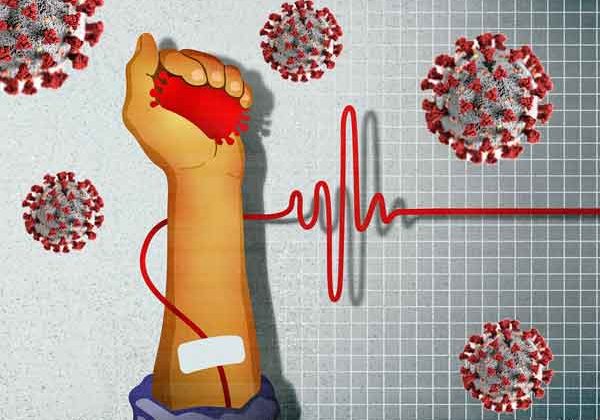Storing medicines while reducing electricity consumption
by Daphne Coleiro, Anthony Serracino-Inglott, Lilian M Azzopardi
Abstract
Temperature storage requirements for medicinal products stored at room temperature were compiled. The rate of heat loss in a local pharmacy was investigated. Necessary measures required to achieve temperature controlled storage conditions in the most efficient manner were proposed. Energy efficiency together with carbon emission reductions were calculated.
Introduction
Pharmaceuticals should be stored under conditions recommended by the manufacturing company at all times to prevent deterioration of the product.1 Proper storage ensures that medications are safe for their intended use, without losing their efficacy or causing undue adverse drug reactions.2 The impact of exposure of medicinal products to temperatures which are outside room temperature (maximum of 25°C) is not well documented. Maintaining a community pharmacy or a pharmaceutical store at 25°C in the local scenario, where during summer months the temperature is normally above 30°C, requires a large investment in temperature control mechanisms and an indirect environmental impact. Yet, little is known about the impact on specific products if they are stored at higher temperatures than 25°C limit.
Temperature variations between 15°C to 30°C may be experienced in pharmaceutical storage areas. Provided the mean kinetic temperature remains in the allowed range, transient spikes up to 40°C are permitted only if the manufacturer instructs so.3 Stability studies show that in periods of heat waves, drugs do not deteriorate unless the heat wave exceeds the period of 6 months. This is because the temperature is not constantly 40°C.3 Also the temperature reaching the core of the drug remains much lower than the ambient temperature due to the limitation of heat exchange provided by packaging material.4
Method
Storage conditions were compiled for the medications listed in the Marketing Authorisation.5 Information regarding the recommended storage conditions of these products was gathered from published research papers,5,6 the respective Summary of Product Characteristics and the Patient Information Leaflet. When this information was not available, the manufacturing company was directly contacted for each particular product and was asked to provide storage data specific for the Maltese climate zone.
Results and Discussion
Data was collected for 1794 medications after reviewing SmPC and directly from manufacturing companies. It resulted that 1039 medications should be stored below 25°C, 414 below below 30°, 4 medications below 37°C and 334 have no special temperature storage conditions. Three medications should not be exposed to temperatures above 50°C, due to the presence of pressurised gas.
The rate of heat loss in a typical Maltese pharmacy was investigated. A pharmacy plan was laid out, depicting a 60m2 pharmacy area, consisting of a main dispensing area and two stores linked to the dispensing area through a door (Figure 1). Medicines are grouped according to the maximum temperature storage conditions permitted in the two different isolated stores of the pharmacy.
For efficient temperature control, an integrated air conditioned system could be installed which ensures that designated areas have the specific recommended temperature conditions namely less than 25°C and 30°C respectively, reflecting a substantial reduction in cooling capacity.
It is possible to store 1039 different medicinal products (stable below 25°C) in store 1 and in the dispensing area. The remaining 755 medications (stored below 30°C or have no special temperature storage conditions) are stored separately in store 2. The air conditioning temperatures should be set to 24oC and 29oC respectively, ensuring that all medications are stored in accordance to their storage requirements.
Heat losses could be further minimized by installing doors between Store 2 (29°C) and the dispensing area (24oC). In general for all sections of a pharmacy, reduction in cooling capacity can be achieved by reducing heat losses, using UV blocking double glazed doors leading to external areas of the pharmacy and air curtains at the main entrance if doors are frequently left open. Future considerations include roof, floor and wall insulation coatings and the use of photovoltaic solar panels.
In a smart pharmacoeconomic scenario of segregation of medications according to maximal tolerated temperatures being a cardinal turning point for a reduction in required cooling capacity, electrical efficiency and reduction in carbon dioxide emissions were calculated. For one pharmacy, over €580 and over 3150kg of CO2 can be saved during the summer months (May to September) when high temperatures are reached. These figures were worked out on the current electricity cost in Malta, where 1 kWh costs €0.161 and produces 0.871 kg of CO2. Taking into consideration all the 215 pharmacies in the Maltese islands, a total of €124,700 can be saved, and around 677,250kg of CO2 avoided every summer.
|
Height of the Pharmacy is 3 m Door |
|
Pharmacy Entrance |
|
Store 1 |
|
External Area 35 °C
|
|
Third Party Wall |
|
Store 2 |
|
Third Party |
|
3m |
|
3m |
|
4 m |
|
4 m |
|
Dispensing Area |
|
6 m |
|
6 m
|
|
Height of the Pharmacy is 3 m Door |
|
Pharmacy Entrance |
|
Store 1 |
|
External Area 35 °C
|
|
Third Party Wall |
|
Store 2 |
|
Third Party |
|
3m |
|
3m |
|
4 m |
|
4 m |
|
Dispensing Area |
|
6 m |
|
6 m
|
Figure 1. Pharmacy Plan
A plan of a typical pharmacy was set so that the heat losses could be calculated. This is a 60m2 pharmacy consisting of a main dispensing area having an area of 36m2 and 2 stores (12 m2 ¬¬each). Both stores have access to an external area. It is assumed that on either side of the pharmacy there are third party buildings. Each area is equipped with an efficient air conditioner; assumed to be 32.5% efficient.7

References
1.British Pharmacopoeia Commission Secretariat of the Medicines and Healthcare products Regulatory Agency. British Pharmacopoeia. 2009; 2: 1141-1142, 1149.
2.Crichton B. Keep In A Cool Place: Exposure of Medicines to High Temperatures in General Practice During A British Heat wave. Journal of the Royal Society of Medicine. 2004; 97: 328-329.
3.Brown L, Campagna J. Medication Storage in the EMS Environment: Understanding the Science and Meeting the Standards. EMS Responder. 2005.
4.AFSSAPS French Health Product Agency. Clarification on the conservation of drugs in the event of heat wave. 2008.
5.Malta Medicine’s Authority. Product Search. Available on URL: http://www.medicinesauthority.gov.mt/products/search.htm
6.Cohen V. Jellinek S, Teperikidis L, Berkovits E, Goldman W. Room- Temperature storage of medicines labeled for refrigeration. Am J Health-Syst Pharm. 2007; 64: 1711-1715.
7.A Qualitative Comparison of High Efficiency AC vs. DC Power Distribution for Data Centers. Rasmussen N, Spitaels J. Schneider Electronic. 2012.




